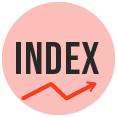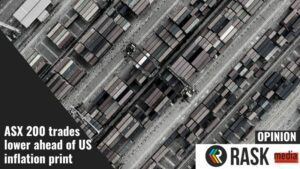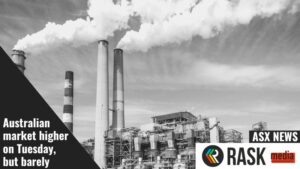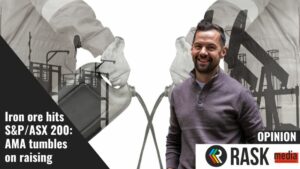
The Match Out: S&P/ASX 200 (INDEXASX: XJO) gives back half of Friday’s rally
Here’s today’s The Match Out report from Market Matters’ James Gerrish. Key point: the S&P/ASX 200 (INDEXASX: XJO) finished down -0.67% to 7230.40.

The All Ordinaries (INDEXASX: AXAO) (INDEXASX: XAO) is one of two popular Australian stock market indices. The All Ords tracks the performance of 500 of the largest shares on the ASX, as measured by market capitalisation. It was established in January 1980. That compares to the ASX 200 (ASX: XJO) which tracks just 200 companies.
Important point: the All Ords & ASX 200 are skewed to the largest shares on the market (e.g. the banking and resources sectors), given the focus on market capitalisation, so it’s important to consider how well its long-term performance actually reflects your portfolio’s return.
This chart shows performance of the index and S&P/ASX 200 Net Total Return (INDEXASX: XNT), which includes the impact of dividends being reinvested. The three most popular indices for Australian shares are the All Ordinaries (INDEXASX: XAO), S&P/ASX 200 Net Total Return (INDEXASX: XNT), and S&P/ASX 200 (INDEXASX: XJO).

Here’s today’s The Match Out report from Market Matters’ James Gerrish. Key point: the S&P/ASX 200 (INDEXASX: XJO) finished down -0.67% to 7230.40.

A positive mood on Friday lifted the benchmark Australian index, the S&P/ASX 200 (INDEXASX: XJO), by 92.5 points, or 1.3%, to 7,279 points, in its best day since July. That helped push the index to a 1.7% rise for the week.

The Australian August job report blew expectations out of the water, with 64,900 jobs created in the month, well above the 23,000 anticipated by economists.

A tech slide dragged the ASX indices lower on Wednesday, ahead of the US inflation data coming in overnight.

The Commonwealth Bank of Australia (ASX: CBA) share price started the year at $98.57. CBA shares recently traded around $101.7. Is the CBA share price undervalued?

The benchmark S&P/ASX200 (INDEXASX: XJO) index managed to finish 14.6 points, or 0.2%, higher at 7206.9, with the broader All Ordinaries (INDEXASX: XAO) index tracking that rise in percentage terms, adding 15.1 points to 7402.9.

Both benchmarks weakened into the close, as both the S&P/ASX200 (INDEXASX: XJO) and All Ordinaries (INDEXASX: XAO) fell 0.2% on Friday.

The Westpac Banking Corp (ASX: WBC) share price is lower 7% since the start of the year. Is the WBC share price undervalued?

Both local benchmarks, including the S&P/ASX200 (INDEXASX: XJO) fell 1.2% on Thursday, as pressure continues to build from poor global economic data.

Here’s today’s The Match Out report from Market Matters’ James Gerrish. Key point: the S&P/ASX 200 (INDEXASX: XJO) finished down -0.67% to 7230.40.

A positive mood on Friday lifted the benchmark Australian index, the S&P/ASX 200 (INDEXASX: XJO), by 92.5 points, or 1.3%, to 7,279 points, in its best day since July. That helped push the index to a 1.7% rise for the week.

The Australian August job report blew expectations out of the water, with 64,900 jobs created in the month, well above the 23,000 anticipated by economists.

A tech slide dragged the ASX indices lower on Wednesday, ahead of the US inflation data coming in overnight.

The Commonwealth Bank of Australia (ASX: CBA) share price started the year at $98.57. CBA shares recently traded around $101.7. Is the CBA share price undervalued?

The benchmark S&P/ASX200 (INDEXASX: XJO) index managed to finish 14.6 points, or 0.2%, higher at 7206.9, with the broader All Ordinaries (INDEXASX: XAO) index tracking that rise in percentage terms, adding 15.1 points to 7402.9.

Both benchmarks weakened into the close, as both the S&P/ASX200 (INDEXASX: XJO) and All Ordinaries (INDEXASX: XAO) fell 0.2% on Friday.

The Westpac Banking Corp (ASX: WBC) share price is lower 7% since the start of the year. Is the WBC share price undervalued?

Both local benchmarks, including the S&P/ASX200 (INDEXASX: XJO) fell 1.2% on Thursday, as pressure continues to build from poor global economic data.


